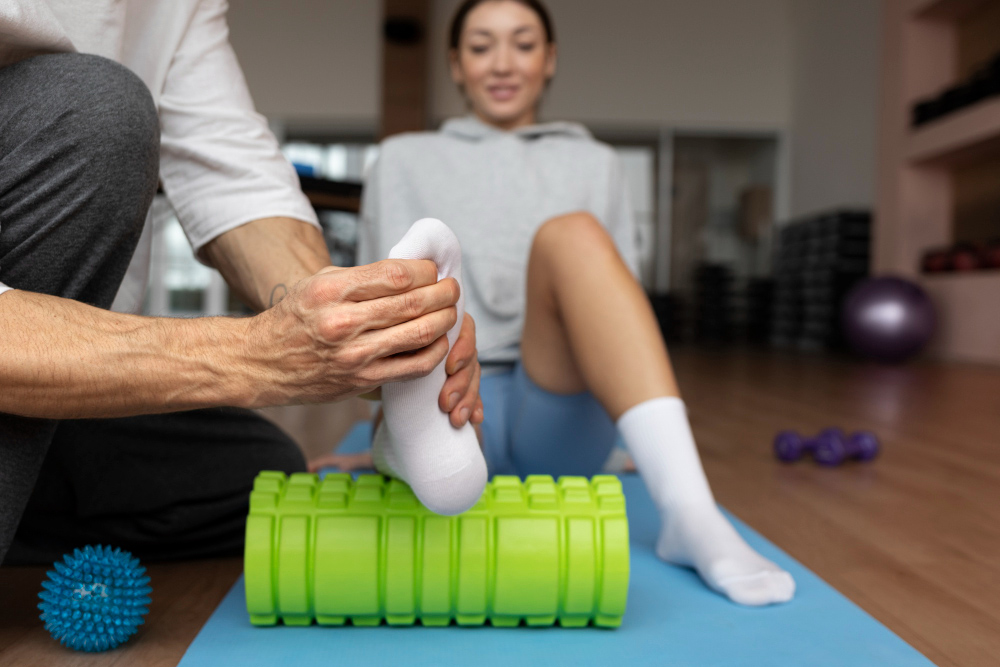The Do’s and Don’ts of Tendon Rehab

Tendon injuries can be frustrating, especially when they sideline you from activities you enjoy. They demand patience and a proper rehabilitation approach tailored to your unique needs. But without the right guidance, it’s easy to make mistakes that prolong healing or even worsen the injury.
Whether you're dealing with a pesky case of tennis elbow or recovering from a torn Achilles, understanding the "do’s and don'ts" of tendon rehab is essential. This post will explore practical tips and strategies to help you heal effectively, avoid setbacks, and return safely to your favorite activities.
What Are Tendons and Why Do They Get Injured?
Tendons are the resilient yet flexible cords that connect muscle to bone. They play a crucial role in facilitating movement and absorbing impact. However, repetitive stress, overuse, or sudden injuries can result in tendon problems such as tendinitis (inflammation) or tendinosis (degeneration without inflammation).
Common tendon injuries include:
- Achilles tendinitis (affecting the heel and ankle)
- Tennis elbow (lateral epicondylitis)
- Rotator cuff tendinitis (shoulder)
- Patellar tendinitis (jumper's knee)
Rehabilitation plays a vital role in promoting tendon recovery and preventing long-term damage, but it must be done correctly.
Do’s of Tendon Rehab
1. Do Seek Early Guidance from a Physical Therapist
One of the first steps to effective recovery is consulting with a qualified physical therapist. A professional can accurately assess the severity of your injury, create a personalized treatment plan, and guide you through safe and effective rehab exercises.
If you’re in Winter Park, FL, you’re in luck! Experienced physical therapists, like B Physical Therapy, specialize in tendon rehab and can help you recover efficiently.
2. Do Listen to Pain Signals
Your body communicates through pain, so don’t ignore it. While mild discomfort during rehab exercises may be normal, sharp or increasing pain is a red flag indicating that you may be pushing too hard. Always adjust your activity level based on what your body is telling you.
3. Do Focus on Eccentric Exercises
Eccentric exercises, where the muscle lengthens under load, are highly effective for tendon rehab. Studies show that eccentric strengthening helps repair damaged tendon fibers and improve their capacity to handle stress.
For example:
- Achilles tendinitis: Try eccentric heel drops on a step.
- Tennis elbow: Perform reverse wrist curls with light weights.
Always start with a professional's guidance to ensure proper form and safe progression.
4. Do Prioritize Rest and Gradual Progression
While it’s important to stay active in rehab, rest is just as crucial to tendon healing. Take breaks between exercise sessions to allow the tendon to recover. Gradually increase the intensity and volume of activities to avoid overstressing the injured area.
5. Do Use Modalities to Manage Pain and Swelling
Supplement your rehab routine with tools and strategies for pain relief and inflammation control. These include:
- Ice packs to reduce swelling
- Foam rollers or massage tools to relax tight muscles
- Over-the-counter anti-inflammatory medications (if recommended by your doctor)
Your physical therapist may also incorporate advanced modalities like ultrasound or electrical stimulation to aid recovery.
Don’ts of Tendon Rehab
1. Don’t Ignore Warm-Ups
Jumping straight into exercises without warming up can strain already-injured tendons. Incorporate light activities like walking or dynamic stretches to prepare your body and improve blood flow before starting any rehab routine.
2. Don’t Rely Solely on Rest
It’s a common misconception that total rest will cure a tendon injury. Complete inactivity can lead to stiffness, reduced blood flow, and muscle atrophy. Instead, focus on controlled, progressive exercises to stimulate tendon healing.
3. Don’t Return to Activities Too Soon
One of the biggest mistakes you can make is rushing back to high-impact activities before your tendon is fully healed. Doing too much too soon can undo progress and even result in re-injury.
For example, if you’re recovering from Achilles tendinitis, avoid running or jumping until your physical therapist confirms that your tendon can handle these loads.
4. Don’t Overdo Stretching
While gentle stretching may help relieve tightness, excessive or aggressive stretching can strain an injured tendon further. Stretching should be done carefully and as recommended by a physical therapist.
5. Don’t Skip Strengthening Other Areas
Tendon rehab isn’t just about focusing on the injured area; strengthening surrounding muscles and improving overall biomechanics is equally important. For example, if you’re rehabbing a shoulder tendon, strengthening your back and core can improve overall posture and reduce strain on the shoulder.
Additional Tips for Successful Tendon Rehab
- Maintain a Balanced Diet
Proper nutrition plays a critical role in the healing process. Include foods rich in collagen, vitamin C, and omega-3 fatty acids to support tendon repair.
- Wear the Right Support
Braces or orthotics recommended by your physical therapist can provide extra support and stability as you recover.
- Stay Consistent
Consistency is key to progress. Make sure to follow your rehab plan as prescribed and avoid prolonged periods of inactivity.
How a Physical Therapist in Winter Park, FL Can Help
Tendon injuries can be tricky to overcome, but with the right guidance, recovery is achievable. The team at B Physical Therapy in Winter Park, FL, has the expertise to create a tailored rehab program designed for your specific needs. From manual therapy to advanced modalities and guided exercises, they’ll help you get back to doing what you love.
Take the First Step Toward Healing Today
If you’re dealing with a tendon injury and need expert guidance, don’t wait any longer. Contact B Physical Therapy in Winter Park, FL, today to schedule an appointment and start your personalized rehabilitation plan. Together, we’ll put you on the path to full recovery.